Drilling the Holes
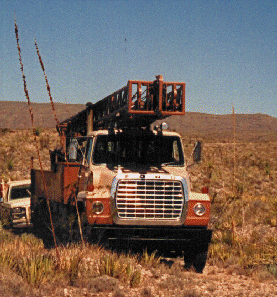
Boreholes at Lajitas were drilled with available waterwell equipment.
Access to the sites was one of the principle restrictions that had
to be considered (the other was radio telemetry line-of-sight). A
two man contract
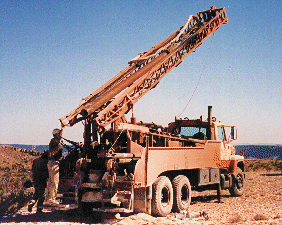 crew accomplished drilling all the required holes
within a week without problems except for a number of rock damaged
tires.
crew accomplished drilling all the required holes
within a week without problems except for a number of rock damaged
tires.
Locations and access had been scouted during a prior trip.
The drilling crew completed about two holes holes per day.

Distant shot of drilling operation.
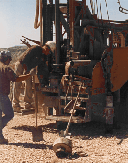
Preparing to drill
While, air drilling in limestone
can be a dusty operation, it causes
far less impact on the surrounding countryside than a more
conventional vault excavation. The holes were drilled oversized
such that there would be sufficient clearage to cement the casing
from the surface down.
Once the hole is drilled and before the casing is set,
several feet of a cement grout is poured into
the bottom of the hole. This will form the 'floor' of the
borehole vault.
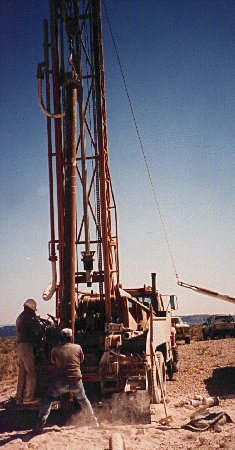
Lowering the casing into the hole.
The casing is then carefully lowered into this
slurry, plumbed, and then left while the slurry sets
(usually overnight).

Plumbing the casing
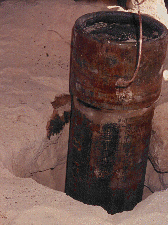
Waiting for the 'floor' to harden
On the next day, the cemeting is completed
by pouring a slurry around the outside of the
casing until the entire length is cemented.
The top of the casing is capped to seal out
rain water and rocks from interested children.
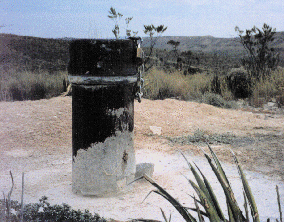
Completed borehole-vault ready for installation
This particular borehole-vault was 40 feet deep
(the others are all 20 feet). It was done as a test and
demonstration to explore borehole-vault installations in deeper
holes. Installing the seismometer in this hole was no more
difficult than the shallower holes.
 crew accomplished drilling all the required holes
within a week without problems except for a number of rock damaged
tires.
crew accomplished drilling all the required holes
within a week without problems except for a number of rock damaged
tires.





